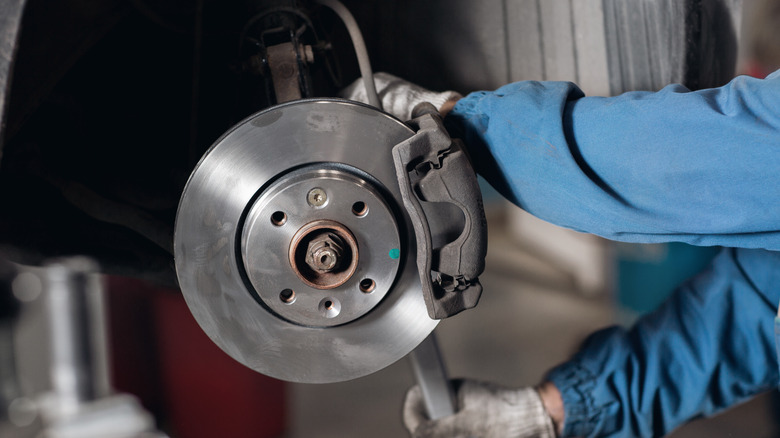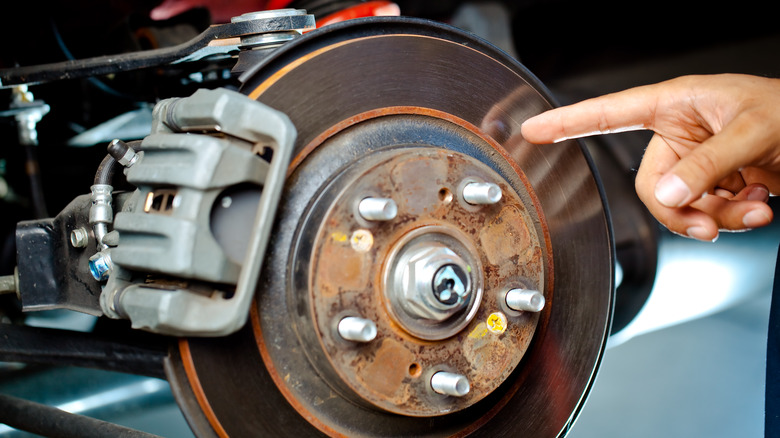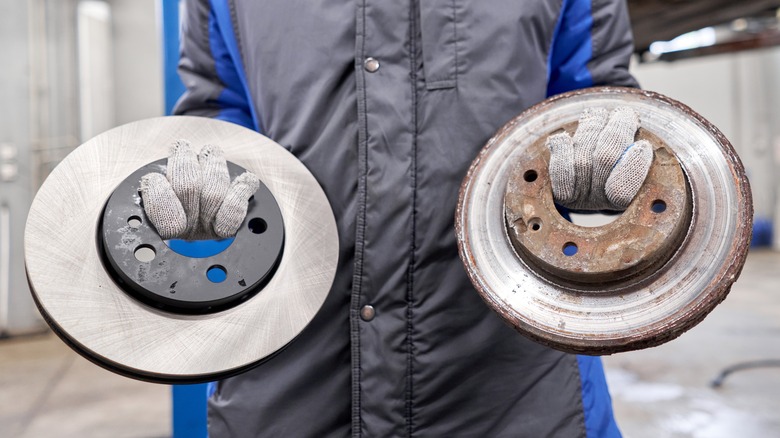How Often Do You Actually Need To Change Your Car's Brake Rotors?
For many drivers, keeping your vehicle in clean, sparkling, perfect order is a point of pride. Some aspects may be largely cosmetic (the tiniest scratch in the paint won't generally do any harm, but you certainly don't want to see it), while others are absolutely essential from a safety point of view.
As far as safety goes, there are few vehicle components as important as the brakes. Maintaining them, then, is paramount, and there are a lot of different elements to doing so. In addition to bleeding the fluid and switching out the brake pads (a task confident drivers can complete by themselves with preparation), another important element of the job is changing out the brake rotors.
It's difficult to know how often you should do so, as the requirements for each vehicle will differ. For the uninitiated, we'll take a look at exactly what the brake rotors do in the wider context of the brakes, how to determine whether they're in need of replacing, and provide a general sense of when to do so. It's also crucial to consider the differences between ceramic brake rotors and steel ones, as the material they're made from can have a big influence on how long they're likely to last.
The function and construction of brake rotors
The rotors and pads of your vehicle's brakes are both subjected to considerable force. It's the motion of the rotor that keeps everything in line with the wheel, and it's the rotor that the pads grip when you hit the brakes. This means, then, that brake rotors need to be of quite sturdy construction to continue performing at their best.
Ceramic and carbon components are typically used for this purpose in higher-end vehicles, but the longevity of these materials naturally means that such rotors cost considerably more. Indeed, Auto Trader reports that the pads and rotors alone can cost around $11,000 for ceramic rotors. Iron rotors, meanwhile, are a much more widely used middle ground, providing a brake system that's more affordable, and still hardy, but which will typically require more frequent replacement.
Just how frequently you'll need to do so will depend on a variety of factors. The more you drive, the more wear and tear your brakes will experience, and so the sooner you'll want to replace your rotors. Your owner's manual and your own mechanic will know your specific vehicle and model best, and so will be able to provide tailored advice. It's helpful, though, to have an estimated figure of just how many miles you should cover between rotor changes. Next, we'll lay all of that out for you.
How often you should change your brake rotors
A handy rule of thumb is to replace both your brake pads and rotors in the one session. By doing so, you can be sure that both these crucial components are at their best. As with tire rotation, even wear is the key. This certainly isn't a hard and fast rule, though, and it just won't be practical to do so every time; particularly as the rotor tends to last rather longer than the pad.
It is recommended to replace the typical brake rotors approximately every 50,000 to 70,000 miles you drive. With the accompanying pads, meanwhile, about 20,000 miles to 25,000 miles is a good, early time to have them inspected and changed if necessary. The rotors in a ceramic/carbon setup, meanwhile, can last for 100,000 miles or so (though the pads must still be changed in between).
All too often, though, our cars won't want to stick to our convenient maintenance schedule, and tend to have their little ways of telling us when such jobs need to be done. If you can see any damage to your rotors, notice that they don't react at the same speed as they used to, or there's any change in them that feels unusual, always be safe and have them checked out.


